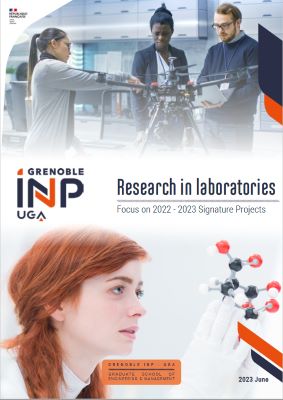article written by Isabelle Chéry
Definition:
Know-how is defined as a body of unpatented practical or technical knowledge. It is:- secret
- substantial, i.e., it has an economic utility (not necessarily technical)
- identified, i.e., sufficiently described so that someone else can reproduce it
- and finally, transmissible, i.e., it must be reproducible
Secrecy means that the information characterising the know-how must not be publicly available. If it enters the public domain then the know-how loses its qualification as “know-how” and falls accordingly.
Note that the creation of a state of the art, i.e., the compilation of public information, is not know-how. This work is a service.
Know-how is subsidiary to a patent in the case of non-traceable processes, i.e., processes which are not found in the final product, and where it will be difficult to prove infringement.
Substantiality is a criterion of economic utility and not necessarily technical: a sales method can be know-how. Information is always identified by reference to its internal usefulness prior to disclosure, or even by reference to a technical effect.
The identified character requires that the know-how be sufficiently described: the formalisation of the know-how must be written before any other action is taken. This is the test that distinguishes know-how from knowledge. When one wants to transfer a patent associated with know-how, it is necessary to describe it, otherwise it is a lever for the industrialist to negotiate down royalties. The description prevents the know-how from depreciating over time.
The transmissible character requires that the know-how be reproducible by the licensee. The company’s employees the know-how is transferred to must be capable of implementing it. A knack is not a know-how, it is a service. It is not always easy to distinguish between know-how and skills.
Examples of skills:
• Manufacturing process ensuring better productivity
• Design of a material with identified properties
• Characterisation system
• Detection method
• Schematic of a less expensive device
• Design of a material with identified properties
• Characterisation system
• Detection method
• Schematic of a less expensive device
Counter-examples that do not fall within the scope of know-how:
• Competence in a field: the substantial character is not satisfied
• Set of publications: the secrecy requirement is not met
• Know-how with reference to a field: the identified criterion is not met
• Set of publications: the secrecy requirement is not met
• Know-how with reference to a field: the identified criterion is not met
The condition of protection: secrecy
Rights holder: the employer of the author of the know-how
Filing formalities: with a notary or the INPI. Indeed, it is necessary to have proof of the date of creation. For Grenoble INP, proof of creation will only prove, for example, unauthorised use of the know-how by a third party with whom we were covered by a confidentiality agreement on the know-how. The filing of the know-how file also provides us with a number on which to draw up the know-how communication contract.
For a company, proof of the date of creation allows it, in the event of a patent being filed by a third party, to obtain before a judge a right of prior personal possession allowing its holder to continue to exploit its invention on French territory without being liable to pay a consideration to the third party who filed a patent. On the other hand, the holder will not be able to license this right of prior personal possession afterwards.
Renewal: none
Filing procedure: Soleau (see S for Soleau) envelope
Opposition proceedings: none
Prior art searches: it is necessary to check that the know-how does not implement a patent and that it has not already been published elsewhere. It is therefore necessary to check that there is no patent or patent application describing the know-how: searching in what has been made available to the public before the date of filing the application by an oral or written description, usage or any other means, whoever the author may be, including in patents or patent applications from all countries with a filing date prior to the transfer of the know-how. This watch must be maintained at all times as a third party could later file a patent on the know-how.
Extension of rights abroad: no right, secrecy
The right conferred: allows a right of exploitation to be given to a third party.
Infringement of the right: infringement, no industrial property title, therefore not enforceable against third parties. If a third party exploits it without having violated the confidentiality, then he can continue to exploit it without owing anything to the holder.
Comparison between Patent and Know-How:
| Patent | Know-how |
| IP | No IP rights |
| Monopoly of exploitation | Protection by secrecy |
| Text publication | Secret |
| Opposoble to third parties | Unenforceable against third parties |
| Absolute novelty | Not directly accessible |
| Inventiveness | Not necessarily strict inventiveness |
Precaution in the case of a know-how transfer of to a third party: the description of the know-how may not be handed over before the contract is signed. Indeed, if the future licensee does not sign, there will be no recourse.




